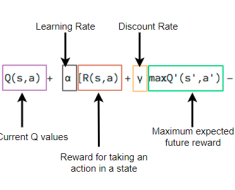
Editorial
. 2024 Jan 12:S0749-8063(23)01031-9.
doi: 10.1016/j.arthro.2023.12.027.
Online ahead of print.
Item in Clipboard
Editorial
Arthroscopy.
.
Abstract
Essential elements required for proper use of artificial intelligence machine learning tools in biomedical research and scientific publications include (1) explanation justifying why a machine learning approach contributes to the purpose of the study; (2) description of the adequacy of the data (input) to produce the desired results (output); (3) details of the algorithmic (i.e., computational) approach including methods for organizing the data (preprocessing); the machine learning computational algorithm(s) assessed; on what data the models were trained; the presence of bias and efforts to mitigate these effects; and the methods for quantifying the variables (features) most influential in determining the results (e.g., Shapley values); (4) description of methods, and reporting of results, quantitating performance in terms of both model accuracy and model calibration (level of confidence in the model’s predictions); (5) availability of the programming code (including a link to the code when available-ideally, the code should be available); (6) discussion of model internal validation (results applicable and sensitive to the population investigated and data on which the model was trained) and external validation (were the results investigated as to whether they are generalizable to different populations? If not, consideration of this limitation and discussion of plans for external validation, i.e., next steps). As biomedical research submissions using artificial intelligence technology increase, these requirements could facilitate purposeful use and comprehensive methodological reporting.
Copyright © 2024 Arthroscopy Association of North America. Published by Elsevier Inc. All rights reserved.




